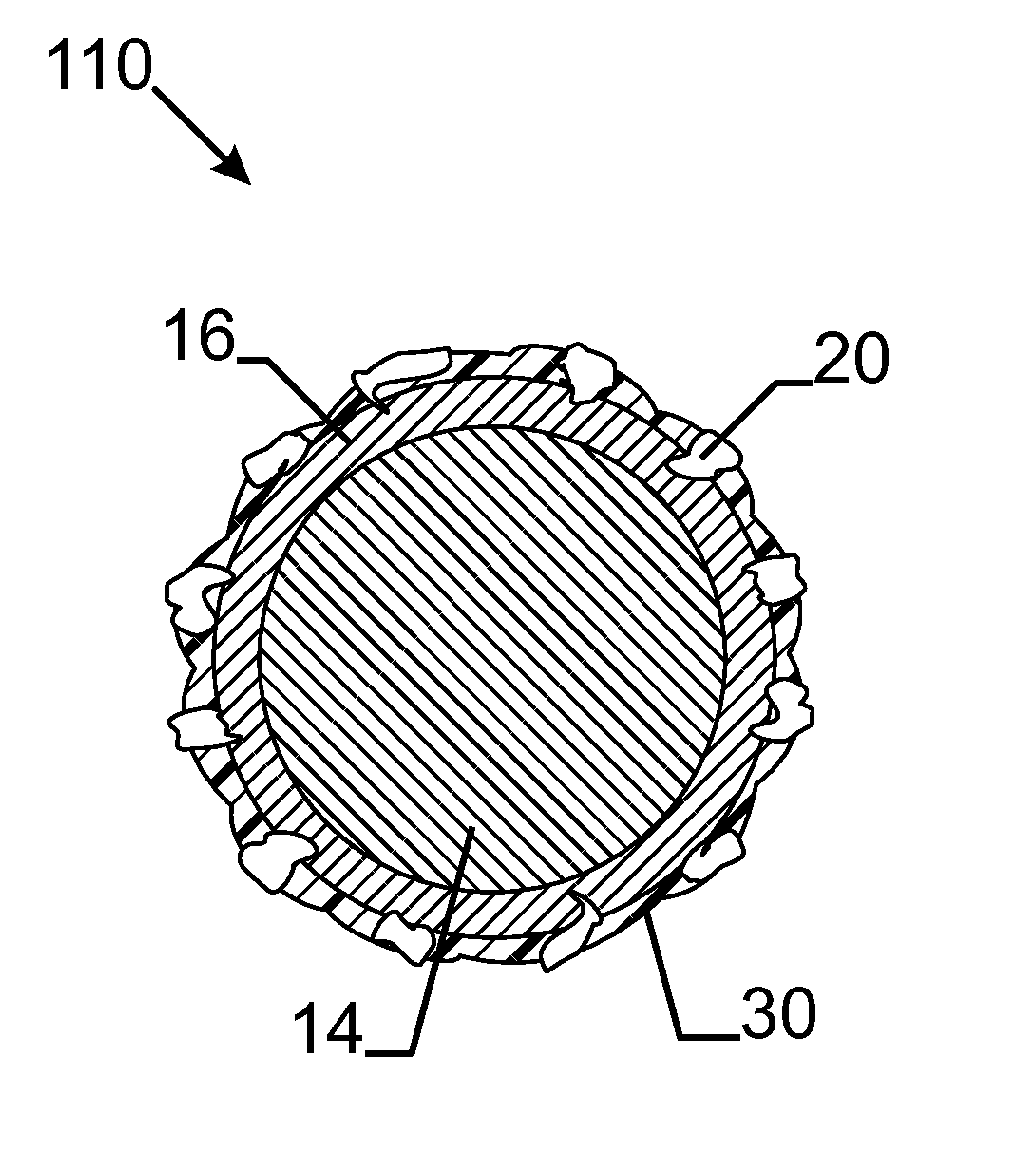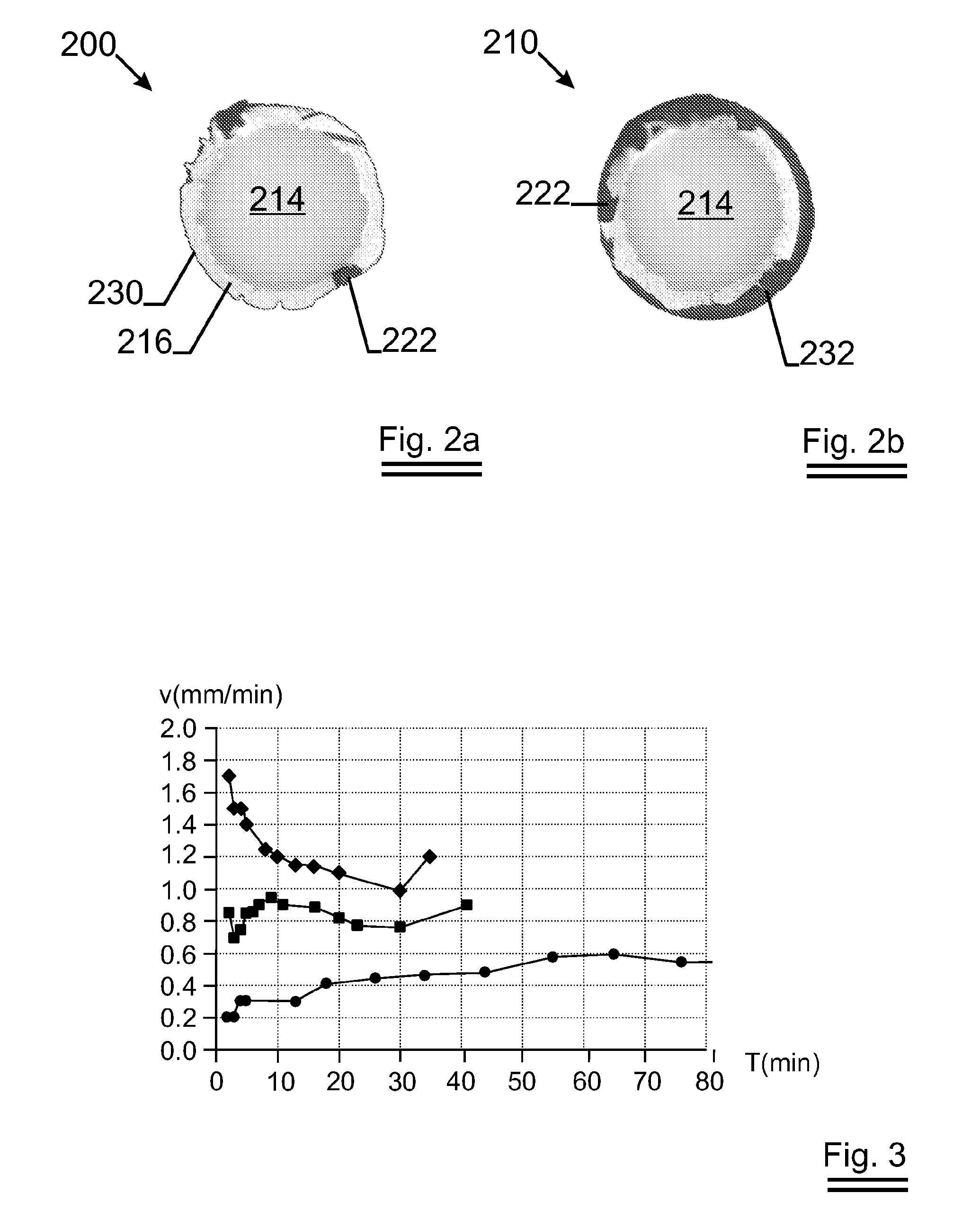Sawing wire with abrasive particles partly embedded in a metal wire and partly held by an organic binder
- Summary
- Abstract
- Description
- Claims
- Application Information
AI Technical Summary
Benefits of technology
Problems solved by technology
Method used
Image
Examples
Embodiment Construction
[0086]FIG. 1a shows the invention in its most generic form (first embodiment). A fixed abrasive sawing wire 100 comprises a metallic wire 12 and an organic binder layer 30. Abrasive particles 20 are fixed to the metallic wire 12 by means of the organic layer 30. Characteristic about the wire is that the abrasive particles are also partly embedded in the metallic wire. FIG. 1b shows a second preferred embodiment wherein the metallic wire comprises a core 14 and a sheath 16 and wherein the abrasive particles are partly embedded in the sheath 16 and bound to the wire by the organic binder layer 30. The particles are embedded at the most one third of their median size in the sheath layer, the remainder being bound in the organic binder layer.
[0087]FIG. 1c shows a third preferred embodiment wherein the interface between the sheath 16 and the core 14 shows a certain roughness. Here the particles have at least two thirds of their median size in the sheath. FIG. 1d shows a fourth preferred ...
PUM
| Property | Measurement | Unit |
|---|---|---|
| Adhesion strength | aaaaa | aaaaa |
| Abrasive | aaaaa | aaaaa |
| Metallic bond | aaaaa | aaaaa |
Abstract
Description
Claims
Application Information
 Login to View More
Login to View More - R&D
- Intellectual Property
- Life Sciences
- Materials
- Tech Scout
- Unparalleled Data Quality
- Higher Quality Content
- 60% Fewer Hallucinations
Browse by: Latest US Patents, China's latest patents, Technical Efficacy Thesaurus, Application Domain, Technology Topic, Popular Technical Reports.
© 2025 PatSnap. All rights reserved.Legal|Privacy policy|Modern Slavery Act Transparency Statement|Sitemap|About US| Contact US: help@patsnap.com



